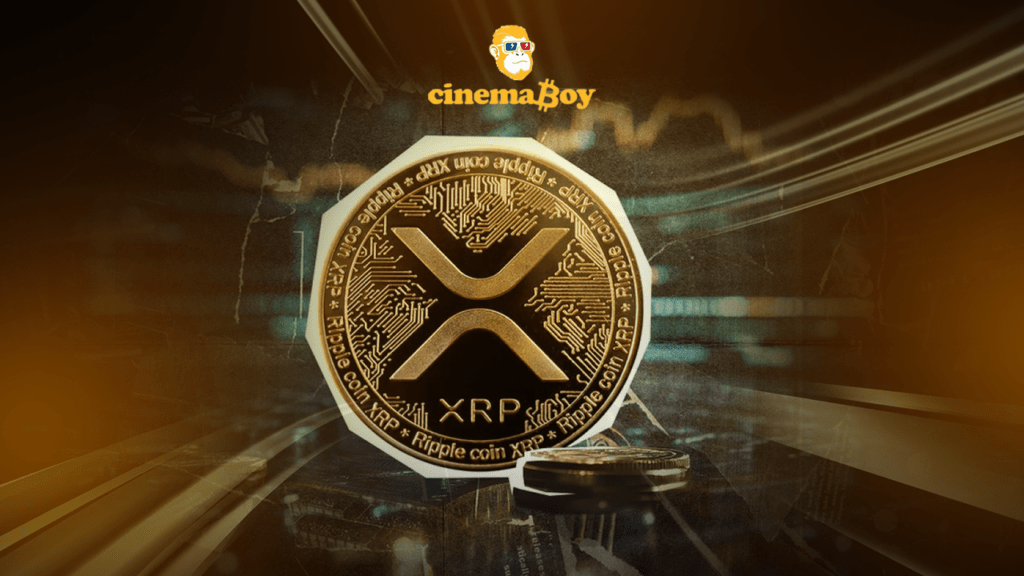Cardano’s Charles Hoskinson Predicts $10 Trillion Crypto Market After CLARITY Act Passes

Cardano founder Charles Hoskinson has projected that the global cryptocurrency market could surge past $10 trillion following the passage of the CLARITY Act. In a recent interview, Hoskinson emphasized that regulatory certainty, rising stablecoin use, and the entrance of major tech firms could combine to trigger historic growth in the digital asset space. Regulatory Clarity May Unlock Massive Expansion Hoskinson described the Digital Asset Market CLARITY Act of 2025 as a pivotal piece of legislation. Passed by the House of Representatives on July 17, the bill aims to establish a formal regulatory framework for digital assets. Specifically, it sets out clear responsibilities for the Securities and Exchange Commission (SEC) and the Commodity Futures Trading Commission (CFTC), designating which agency oversees various types of tokens. Beyond clarifying jurisdiction, the legislation would introduce standardized compliance requirements for exchanges and trading platforms. It also offers legal protections for developers and investors, two groups that have long operated under uncertain and inconsistent rules. Hoskinson noted that this clarity could finally give institutional and corporate actors the confidence to enter the market in force. Big Tech Could Accelerate Crypto Integration Hoskinson believes the passing of the CLARITY Act will signal a green light for the world’s largest technology firms. He specifically pointed to the so-called MAG7, Microsoft, Apple, Alphabet (Google’s parent company), Amazon, Meta, Nvidia, and Tesla, as likely participants. Once clear boundaries are established, these companies could begin building, acquiring, or investing in blockchain-based systems and digital assets. Such involvement would significantly boost public trust and likely lead to an acceleration in real-world use cases. Another important element of Hoskinson’s outlook involves real-world assets (RWAs). These are digital representations of physical or financial assets, such as real estate, commodities, and government bonds. Tokenizing these assets could introduce entirely new markets and use cases for blockchain technology, further boosting adoption. Stablecoins Poised for Explosive Growth Hoskinson also highlighted the role of stablecoins in shaping the next chapter of crypto expansion. According to his projection, the stablecoin market could grow to more than $1–2 trillion once regulatory conditions improve. Recent data support this view. The Kobeissi Letter reported that stablecoins now collectively hold $149 billion in U.S. Treasury securities, a 64 percent increase since the first quarter of 2023. Over that same period, the total stablecoin market capitalization has doubled, reaching roughly $240 billion. This trend positions stablecoins among the largest non-government holders of U.S. debt. Analysts at Apollo have noted that increasing global demand for dollar-pegged stablecoins will likely translate into even greater demand for short-term Treasury instruments. Market Cap Projections and Bitcoin’s Potential Trajectory Currently, the global cryptocurrency market stands at approximately $3.803 trillion. Bitcoin accounts for a dominant share of that value, with a market cap of $2.80 trillion and a dominance rate of 61.2 percent. Should the total market cap reach $10 trillion while Bitcoin maintains its current dominance, its market cap would rise to about $6.12 trillion. That would equate to a Bitcoin price well above $300,000. Such a scenario would mark a historic milestone in Bitcoin’s evolution, from speculative asset to core component of the global financial ecosystem. Related article: World Mobile CEO: “Nobody Better Than Hoskinson to Drive Cardano’s Future” The GENIUS Act Adds Further Momentum Hoskinson’s optimism aligns with additional legislative efforts currently underway. The GENIUS Act, another federal initiative, aims to promote stablecoin adoption and integrate them into the existing financial system. The act allows for greater interoperability between blockchain and traditional finance, creating a bridge for capital and liquidity. Bo Hines, a senior crypto adviser to President Trump, believes the GENIUS Act could drive the digital asset market toward a valuation between $15 trillion and $20 trillion in the coming years. He argues that the act paves the way for innovations such as tokenized public securities and 24/7 trading markets, with dollar-backed stablecoins playing a central role in capital flows. Conclusion Hoskinson’s forecast paints a compelling picture of crypto’s future. With regulatory clarity from the CLARITY Act and structural support from the GENIUS Act, the digital asset ecosystem is positioned for significant institutional and technological expansion.
PayPal Launches “Pay with Crypto” Feature, Allowing U.S. Merchants to Accept XRP, Solana, and More

PayPal has announced the launch of “Pay with Crypto,” a new feature that allows U.S. merchants to accept various cryptocurrencies, including XRP and Solana. The service will roll out in the coming weeks and marks another major leap in the company’s ongoing crypto integration. Under this system, customers can make payments using their preferred cryptocurrency, which PayPal will automatically convert into PYUSD, its native stablecoin. The transaction then settles in U.S. dollars, allowing merchants to receive fiat without managing crypto assets directly. The “Pay with Crypto” feature will support a wide array of popular crypto wallets. Customers can pay using Coinbase Wallet, MetaMask, Binance Wallet, Phantom, Exodus, and others. This flexibility ensures that users across different blockchain networks can seamlessly complete transactions with PayPal-integrated businesses. Solving the Cross-Border Payment Problem PayPal has highlighted the core advantages of this new offering: instant settlements and low transaction fees. During the promotional launch phase, transaction fees will be capped at 0.99%, with a scheduled increase to 1.5% after one year. According to PayPal CEO Alex Chriss, international payments remain prohibitively expensive for U.S. businesses. This new crypto-based solution aims to eliminate much of that friction, enabling businesses to receive payments globally at lower costs and with faster processing times. However, the feature will not launch in New York initially due to the state’s complex regulatory landscape. PayPal has stated it is working to meet those requirements over time. PayPal’s Growing Involvement in Crypto PayPal first entered the cryptocurrency space in 2020, offering U.S. users the ability to buy and sell digital assets, a move that helped drive a massive bull run. The company has since expanded its crypto services significantly. In 2023, PayPal launched its own stablecoin, PYUSD, which it uses to facilitate seamless crypto-to-fiat transactions. While the exact market cap of PYUSD was not detailed in the announcement, it has played a central role in the company’s crypto infrastructure. Last year, PayPal also enabled merchants to hold, buy, and sell digital assets within their business wallets. Merchants could even transfer assets on-chain, giving them greater control and utility over their crypto holdings. Related article: Ripple’s RLUSD Loses Steam: 31% Volume Drop in 24 Hours Final Thoughts By enabling crypto payments through its vast network, PayPal is accelerating the mainstream adoption of digital assets. The “Pay with Crypto” feature not only empowers customers to use tokens like XRP and Solana for real-world transactions but also simplifies global commerce for businesses through instant conversions and low fees. As the feature becomes available nationwide, barring New York for now, it could mark a pivotal shift in how merchants interact with digital currencies. With seamless wallet integration and growing merchant support, PayPal is clearly positioning itself at the forefront of the crypto payments revolution.
Charles Hoskinson Reflects on Cardano’s Full Decentralization Before Embarking on High-Risk Journey

Cardano has officially reached full decentralization, and its founder, Charles Hoskinson, couldn’t be prouder. In a weekend livestream titled “See You on the Other Side,” Hoskinson reflected on what he called the culmination of his life’s work, transforming Cardano into a fully autonomous blockchain ecosystem. Speaking from his home shortly after a trip to Paris, Hoskinson didn’t just look back at past achievements. He also hinted at a bold new chapter in his life, one that involves a journey he described as “dangerous,” with life-threatening potential. But before setting out, he chose to speak directly to the Cardano community, highlighting the gravity of Cardano’s latest milestone. Voltaire Governance Marks the Shift Hoskinson credited the transition to full decentralization to Cardano’s Voltaire governance era, which began in Q3 2024. Under this framework, the project moved from a centralized development model to one that empowers its global community. Central to this shift was the introduction of a new on-chain constitution. Validated through a formal ratification process and supported by a constitutional convention, the new document laid the foundation for Cardano’s decentralized future. Hoskinson emphasized how these elements together form a governance model capable of enduring long-term, independent of any individual or organization including himself. Community Takes Control Through DREs As part of the new system, nearly 1,000 Delegated Representative Entities (DREs) have registered within the Cardano network. These DREs now carry the responsibility of steering Cardano’s decision-making processes. According to Hoskinson, this broad and distributed governance model ensures that no single party holds control over the project’s direction. He expressed confidence that the Cardano community, equipped with this power, can navigate the project’s future successfully. The framework enables holders and stakeholders to engage in direct decision-making, turning Cardano into what Hoskinson described as a “truly decentralized” protocol. Hoskinson Declares Cardano Free of Centralization In no uncertain terms, Hoskinson declared that he and his team at IOG (Input Output Global) have removed every remaining vestige of centralization from Cardano. For a space where decentralization is often more of a promise than a reality, this development stands out. He went on to compare Cardano’s resilience and design philosophy to that of Bitcoin, built to survive time, pressure, and evolving market dynamics. According to Hoskinson, these features aren’t just technical accomplishments; they reflect years of philosophical and architectural effort. “This is my life’s work,” he stated with pride. A Mysterious and Dangerous Expedition Ahead However, Hoskinson didn’t end the livestream on a celebratory note alone. He revealed plans to embark on a high-risk journey to an undisclosed location. While he didn’t share many details, he mentioned the potential dangers, even going so far as to acknowledge the possibility of not returning. “I wanted to do this livestream just in case I don’t make it back,” he said candidly, underscoring the seriousness of the trip. While the nature of the mission remains unclear, his tone suggested both personal fulfillment and closure. Related article: Cardano “Fast as Hell” – Alex Becker Tips ADA for $5 in Upcoming Bull Run Legacy and Future Beyond the Founder Despite the risks ahead, Hoskinson appeared content with the progress Cardano has made. He reiterated his belief that the protocol no longer depends on him or any centralized entity. Instead, its community now holds the reins. In his final remarks, Hoskinson expressed hope that Cardano’s decentralization journey will continue to evolve and inspire, regardless of what happens next. For him, the platform’s ability to thrive independently proves that the vision he championed has become a reality. Cardano’s community will now have to prove that this decentralized future can function as envisioned, without the founder’s direct guidance. If history is any indication, the protocol is more than ready to stand on its own.
XRP Price Plunges as Market Cap Loses $20 Billion in a Day Amid SEC Silence

XRP’s market capitalization plummeted by over $20 billion within just 24 hours. According to fresh data from CoinMarketCap, XRP’s market cap tumbled from $121.81 billion on April 6 to $100.28 billion by the morning of April 7. The sharp decline coincided with a significant increase in trading volume, which soared from $2.26 billion to a staggering $9.6 billion during the same period. This steep drop comes despite XRP’s prior bullish run, which made it one of the standout altcoins in recent months. However, with the sudden shift in market momentum, XRP’s strong gains have turned into mounting losses, signaling a potentially deeper correction ahead. Ripple v. SEC Case Casts Uncertainty Over XRP’s Future While the market experiences a selloff, the United States Securities and Exchange Commission (SEC) remains noticeably silent on the outcome of the long-standing Ripple v. SEC lawsuit. Historically, the SEC has often dismissed cases shortly after issuing major announcements. Yet, in this instance, XRP holders continue to wait for clarity. This silence has only amplified uncertainty, fueling speculation that regulatory ambiguity might contribute to the token’s latest selloff. Without any updates, traders are left navigating choppy waters and relying heavily on technical indicators. Market-Wide Volatility Weighs on XRP It’s not just XRP feeling the pressure. The broader cryptocurrency market has lost $300 billion over the weekend alone, triggering panic across the board. Notably, XRP’s network activity has also collapsed by as much as 65% based on recent on-chain metrics. By April 7, XRP traded at $1.78, representing a 14.96% drop over the previous 24 hours. This daily decline brought its year-to-date (YTD) losses to 14.21%, placing it behind the S&P 500’s 13.54% YTD decline and just behind Bitcoin’s 18.28% drawdown. Technical Indicators Suggest Deeper Trouble Ahead From a technical standpoint, XRP may be heading toward even lower price levels. Analysts, including chartist Ali Martinez, pointed out a potential head and shoulders pattern in an April 4 post on X (formerly Twitter). This bearish pattern typically precedes a sharper fall. If validated, XRP could slide further to around $1.30. The breach of the $2 mark confirms this bearish setup, adding weight to concerns of prolonged downside pressure. As investors watch closely for any moves from the SEC or signs of network recovery, XRP remains highly vulnerable to broader market sentiment and technical triggers. Related article: XRP’s Path to $15: Analysts Back Bullish Breakouts With Strong Technical and Regulatory Fuel Conclusion: Can XRP Reclaim Stability? With regulatory silence, evaporating network activity, and rising bearish pressure, XRP finds itself at a critical juncture. Although the token’s previous performance made it an investor favorite, its sharp correction underscores the volatility inherent in the crypto market. Going forward, traders must closely monitor regulatory developments and technical patterns. Unless the SEC breaks its silence or market sentiment shifts, XRP may continue to struggle below the $2 threshold.
Shiba Inu Hits 1.5M Holders, But Will It Stay Above $0.00001259?

Shiba Inu (SHIB) has just reached a major milestone, surpassing 1.5 million holders. The token now boasts 1,500,742 holders, demonstrating its growing adoption and loyal community. While this increase suggests investor confidence, SHIB’s price remains uncertain, influenced by macroeconomic factors and market sentiment. Will this milestone fuel a price rally, or will external forces keep SHIB’s growth in check? Let’s dive into the latest developments. SHIB Price Update – Gains and Market Fluctuations At present, SHIB trades at $0.00001259, reflecting a 0.79% dip in the last 24 hours but a 2.59% weekly gain. This steady increase in holders suggests ongoing confidence among investors. However, the broader market conditions continue to shape SHIB’s short-term movements. The crypto market remains on edge, anticipating the Federal Reserve’s interest rate decision, which could impact SHIB and other digital assets. How the Federal Reserve Decision Could Impact SHIB On Wednesday at 2:00 p.m. ET, the Federal Reserve will announce its latest interest rate policy. Analysts predict a 99% chance that the Fed will maintain rates, but any surprise adjustments could stir the market. If the Fed signals lower interest rates, risk assets like SHIB could benefit from increased liquidity. However, if the Fed keeps rates high or hints at future hikes, cryptos may struggle as investors opt for safer assets. SHIB’s Key Support Levels – Where to Watch for Movement SHIB’s growing holder base supports long-term optimism, but price stability remains critical. Analysts highlight two key support levels that could dictate SHIB’s next move. A pullback may test $0.0000115, a short-term safety level that has held in previous downturns. If selling pressure increases further, $0.00000815 could act as a stronger demand zone. According to crypto analyst Ali, these price levels could create potential buying opportunities for long-term investors. Scam Alert – Fake ShibaSwap Websites Target Investors While SHIB’s adoption rises, cybercriminals are taking advantage of its popularity. A Shiba Inu-focused X account, Susbarium, has issued an urgent warning about fake ShibaSwap websites designed to steal funds. Cybercriminals are creating counterfeit ShibaSwap sites, tricking users into entering sensitive wallet information. This scam poses a serious threat to SHIB holders, making security awareness more crucial than ever. To avoid falling victim, users must double-check URLs before connecting their wallets. The safest approach is to bookmark the official ShibaSwap site and always verify links shared in online communities. Never share private keys or seed phrases, as scammers often use deceptive tactics to extract these details. What’s Next for SHIB? Reaching 1.5 million holders is a significant achievement for SHIB, proving its strong market presence. However, its short-term price outlook remains uncertain, largely dependent on macroeconomic trends and investor sentiment. If SHIB maintains strong demand and the market turns bullish, a rally toward higher resistance levels is possible. However, if SHIB loses key support levels or the Fed’s decision triggers a broader sell-off, a temporary retracement may occur. Final Thoughts – Is Now a Good Time to Buy SHIB? Investors optimistic about Shiba Inu’s long-term potential may see this growing holder count as a bullish signal. However, market timing plays a crucial role. Keeping a close watch on key price levels and macroeconomic shifts is essential for making informed decisions. Read Also: Shibarium Hits 10M Blocks! Will SHIB’s Price Rebound from a 4.29% Drop? Those considering an investment should always DYOR (Do Your Own Research) and stay updated with the latest market trends before making a move.
Cardano Hits $1 Before Plunging to $0.82—Is the Rally Over?

Cardano experienced a dramatic 60% surge over the weekend, surpassing $1 on Sunday. The price rally followed U.S. President Donald Trump’s announcement of a national digital asset reserve, which included ADA. Enthusiastic traders pushed the price higher, anticipating long-term growth. However, the excitement quickly faded, leading to significant profit-taking. The initial price spike turned out to be short-lived. Over the past 24 hours, ADA dropped by 20%, falling below $1. Market sentiment shifted as speculative traders capitalized on the rally, causing downward pressure. At press time, ADA trades at $0.82, reflecting declining interest from investors. Technical Indicators Signal Bearish Momentum On the daily chart, technical indicators highlight weakening demand for ADA. The Relative Strength Index (RSI) is trending downward, showing reduced buying pressure. This momentum indicator, which measures overbought and oversold conditions, now approaches the crucial 50-line. A downward RSI movement suggests sellers are dominating the market. If it falls below 50, bearish momentum could strengthen further. In contrast, an RSI above 50 would indicate growing bullish control. Since ADA’s RSI is declining, traders appear more inclined to sell rather than buy, amplifying downward pressure. ADA Faces Risk of Breaking Below Its 20-Day EMA ADA’s price currently hovers near its 20-day Exponential Moving Average (EMA), a critical short-term trend indicator. The 20-day EMA tracks an asset’s price over the past 20 days while giving more weight to recent fluctuations. A drop below this moving average signals weakening momentum and increased selling activity. If ADA confirms a break below this level, the bearish trend could intensify. Market participants would then expect further declines, reinforcing negative sentiment. Can ADA Rebound to $0.94? At $0.82, ADA rests above key support at $0.72. If selling pressure intensifies, this support may fail to hold. In that scenario, ADA’s price could decline further toward $0.60, worsening its short-term outlook. However, renewed buying interest could change this trajectory. If new investors enter the market and stall profit-taking, ADA could rebound to $0.94. A successful push above this resistance level may propel Cardano toward a three-month high of $1.32, restoring investor confidence. Read Also: Cardano Rockets 50% After Reserve Inclusion – Will ETF Be Next? Traders should monitor price movements closely and use risk management strategies. Setting stop-loss orders and tracking resistance levels will help navigate potential price swings. Whether Dogecoin recovers or drops further, staying informed is crucial for making smart trading decisions.
Crypto Crash Warning: $1B Liquidated as XRP and SOL Face Critical Levels

The crypto market has faced intense volatility in the first week of March. Traders reacted sharply to President Trump’s unexpected announcement about adding altcoins to the US crypto reserves. This news triggered massive liquidations, with over $1 billion wiped out across multiple altcoins. Market sentiment remains fragile as traders adjust their strategies in response to this regulatory shift. How Regulatory News Affects Trader Behavior New tax policies and regulatory frameworks have significantly impacted capital flows. As the administration introduces changes, traders scramble to reposition their holdings. This shift has created noticeable imbalances on liquidation maps, signaling possible future liquidation events. Increased trading activity reflects uncertainty, and sudden movements could trigger further sell-offs. In such an unstable environment, staying ahead of market trends becomes crucial. XRP (XRP) Approaches a Critical Level XRP faces a crucial test as traders monitor its next move. The 7-day liquidation heatmap suggests a sharp rise in long liquidations if the price dips below $2. Currently trading at approximately $2.33, XRP has already lost 20% in recent days. If it drops further, total long liquidations could exceed $215 million. Exchange liquidation maps reveal a strong trend toward long positions, which increases downside risk. Additionally, whale movements add uncertainty. Shortly after Trump’s announcement, an escrow account unlocked 500 million XRP, raising concerns about potential sell pressure. With traders wary of further losses, XRP’s price trajectory remains unpredictable. Solana (SOL) Risks Major Liquidations Solana finds itself in a precarious position. If SOL drops to $120, long liquidations could surpass $437 million. This scenario represents an 11% decline from its current trading price of $136.3. Traders remain on edge as large transfers from an FTX/Alameda-linked wallet to Binance create additional pressure. These movements suggest possible sell-offs, leading to speculative trading and increased liquidation risks. If SOL fails to hold key support levels, market-wide panic could set in. Investors must closely monitor whale activity and liquidity trends to navigate this uncertain phase. Cardano (ADA) Faces High Volatility Cardano also presents significant liquidation risks. If ADA rises above $0.90, short liquidations could exceed $50 million. Currently trading at $0.81, ADA’s lower market depth makes it more vulnerable to price swings than its competitors. Recent analyses from Kaiko suggest ADA could experience the highest price volatility among major cryptocurrencies. The reduced market depth amplifies risks, making ADA particularly sensitive to sudden price shifts. If traders push ADA past critical levels, liquidation events could accelerate. Navigating a Volatile Crypto Market Extreme volatility dominates the current crypto landscape. Regulatory news has forced traders to rethink their strategies, leading to unpredictable price movements. XRP, SOL, and ADA face heightened liquidation risks, increasing market uncertainty. Read Also: Cardano Rockets 50% After Reserve Inclusion – Will ETF Be Next? To navigate these challenges, traders must remain vigilant. Leverage amplifies risks, making it essential to assess potential price swings before taking positions. As regulatory developments unfold, market sentiment could shift rapidly. Understanding these dynamics will help traders adapt and avoid costly liquidation events.
Dogecoin Surges 4% After Elon Musk’s DOGE Website Launch—$0.5740 Price Target in Sight?

Elon Musk’s Department of Government Efficiency (DOGE) took a major step on Thursday by launching its official website. The advisory panel, created during Trump’s presidency, now provides updates on spending cuts and streamlining federal operations. This move has sparked discussions nationwide, reinforcing the panel’s goals and vision. DOGE Website Offers Insights on Spending Cuts On February 13, the Department of Government Efficiency announced on X that its official website, ‘doge.gov,’ had launched. This site provides real-time updates on government spending reductions, agency employee activities, and the panel’s efficiency improvements. Elon Musk confirmed that the website will showcase “details of cost savings.” He also shared his plan to dedicate the next four months to cutting $2 trillion from the federal budget. His announcement fueled further interest in the panel’s ambitious goals. Read Also: Shiba Inu Struggles Against Resistance at $0.00001605 Despite Historic UAE Partnership Inflation Expectations Amid Cost-Cutting Measures Fox Biz correspondent Charles Gasparino shared insights on X about the panel’s impact on inflation. He suggested that if the advisory department meets its targets, inflation could drop to 2%. Currently, U.S. Consumer Price Index (CPI) inflation data for January shows a 3% year-over-year increase, exceeding expectations. If the panel successfully implements cost-reduction strategies, broader market sentiment may improve, benefiting risk assets. The panel also plans to introduce an “overall savings scorecard” and a breakdown of cost reductions by February 14. These upcoming initiatives add to the excitement surrounding this governmental effort. Dogecoin Rises After DOGE Announcement Musk’s initiative not only affects government policy but also influences the crypto market. Dogecoin, the meme cryptocurrency often linked to the billionaire, gained over 4% after the announcement. At reporting time, Dogecoin traded at $0.2579, reaching an intraday high of $0.267 from a low of $0.2489. Investors speculate that Musk’s involvement in DOGE will boost Dogecoin’s price. His previous endorsements have significantly influenced the token’s movements, adding to market intrigue. Crypto analyst ‘VipRoseTr’ expressed optimism about Dogecoin’s future. He pointed out that the price rebounded from a Fibonacci support level, signaling a bullish reversal. If this trend continues, Dogecoin could reach $0.4993, $0.5740, and $0.6543. However, given the meme coin market’s volatility, traders remain cautious.
7-Day Price Analysis: Avalanche (AVAX) Under Pressure, 7-Day Price Trends and What’s Next!

Avalanche (AVAX) has demonstrated a volatile trading week from January 17 to January 23, 2025. This analysis delves into the price movements, key factors influencing the market, and expert projections for the near future. Price Movements At the start of the week, AVAX opened at approximately $40.00. The price initially showed strong upward momentum, climbing to nearly $42.00 by January 18. This rise was buoyed by positive sentiment around recent developments within the Avalanche ecosystem, including partnerships that sparked renewed interest among investors. 7-Day price chart- source: CoinMarketCap However, as the week progressed, bearish trends began to dominate. By January 20, AVAX had experienced a sharp decline, dipping below the $40.00 mark. Fear surrounding regulatory scrutiny on cryptocurrencies played a significant role, prompting many investors to adopt a cautious stance. January 21 saw a particularly significant drop, as the price reached lows of around $36.00. The market sentiment was primarily driven by broader market trends affecting various cryptocurrencies. The volatility continued, and by January 23, AVAX settled around $38.50, reflecting a challenging week overall. Factors Influencing Price 1. Market Sentiment: The overall mood of the cryptocurrency market has been mixed, largely impacted by external economic conditions and regulatory discussions. 2. Tech Developments: Updates regarding the Avalanche network’s scalability and its capacity to facilitate decentralized applications contributed to intermittent price increases earlier in the week. 3. Investor Behavior: The appearance of profit-taking as AVAX reached its peak also led to increased selling pressure, exacerbating the decline in price. Technical Indicators Technical analysis of AVAX reveals a downtrend in momentum. Moving averages, such as the 50-day and 200-day, indicate that bearish conditions are prevailing. The Relative Strength Index (RSI) hovered around 35, which suggests that AVAX is nearing oversold conditions, indicating a potential rebound if buying pressure returns. Future Projections Moving forward, traders and investors are advised to monitor key levels of support and resistance. If AVAX manages to hold above the $36.00 support level, it could set the stage for a potential upward correction. Conversely, further declines below this threshold could lead to more significant losses. Related Article: Peanut (PNUT) Price Volatility Unwrapped: Here’s What Happened… Analysts project an upward movement if favorable news relating to regulatory clarity emerges, alongside continued technical improvements within the Avalanche ecosystem. Conclusion In conclusion, Avalanche (AVAX) witnessed a tumultuous week marked by significant price fluctuations. Traders should stay informed about market trends, regulatory changes, and technical indicators. As the broader cryptocurrency market reacts to global economic factors, AVAX remains a focal point for potential investors seeking opportunities in a rapidly evolving landscape. Related Article: Cardano (ADA) 24-Hour Price Analysis : $0.94 Support… By staying vigilant and utilizing technical analysis, traders can effectively navigate the uncertain waters of the cryptocurrency market in the days to come. Keep your eyes on AVAX—it might just surprise you!
32.74 Trillion Shiba Inu Transferred to Unknown Wallet: The Full Story

A staggering 32.74 trillion Shiba Inu tokens were moved to an unidentified wallet by Crypto.com, leaving the Shiba Inu community astonished. The large-scale transfer was first highlighted by Whale Alert, a blockchain tracker, and sparked various speculations within the crypto space. What Happened in Detail It was revealed by Whale Alert on Tuesday that Crypto.com executed a significant transfer of Shiba Inu tokens. The exchange moved an initial batch of 1.634 trillion SHIB, worth approximately $39 million, from its hot wallet labeled “0xf2B0” to an unidentified wallet, “0xa23f.” The transfer occurred at 13:47 (UTC). Additional data showed that similar transactions were repeated multiple times within the same hour. The exchange transferred identical amounts in five separate transactions. Upon further examination, it was discovered that Crypto.com executed 20 consecutive transfers to the same receiving wallet. The total transferred amount reached an astonishing 32.74 trillion SHIB, valued at $390.39 million. Internal Transfers Confirmed An in-depth on-chain analysis conducted by The Crypto Basic clarified the situation. The investigation concluded that the enormous transfer was an internal shuffle within Crypto.com. The receiving address was identified as a deposit wallet owned by the exchange, as confirmed by data from Arkham. This internal movement involved shifting excess Shiba Inu tokens from the hot wallet to a more secure deposit address. Such internal transfers are common practices for major trading platforms, typically carried out to bolster security measures and maintain liquidity. Mixed Reactions from the Shiba Inu Community The Shiba Inu community reacted with a mix of confusion and speculation to the transfers. Some enthusiasts expressed concerns, questioning the reasons behind the massive movement of tokens. A few members speculated that Crypto.com might have been hacked, suspecting that the tokens were being stolen. Related Article: On the other hand, other users interpreted the transfer differently. They believed it indicated a large-scale whale accumulation, suggesting that an investor might be purchasing enormous amounts of Shiba Inu and moving them to a private wallet. The movement of 32.74 trillion Shiba Inu tokens by Crypto.com was confirmed to be an internal process aimed at enhancing the exchange’s operational efficiency. While some members of the crypto community viewed the transfers with skepticism, others perceived them as bullish signals indicating whale accumulation. Related Article: As the Shiba Inu market continues to navigate these developments, the incident highlights the need for transparency in large-scale crypto transactions to avoid unnecessary panic within the community.

